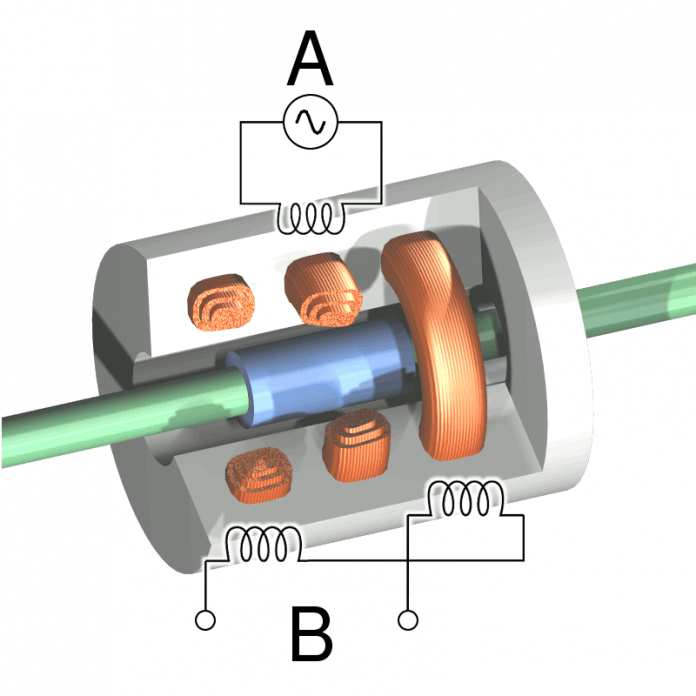BACKGROUND: HIGH PRECISION LINEAR VARIABLE DIFFERENTIAL TRANSFORMER.
The production principles of instrumental designing are based upon associative properties of electromagnetism and transduction. This tech solution helps in the conversion of the rectilinear motion of an object with mechanical coupling with transformation principles application into an electrical signal. Also, these are readily called motion sensors. The most important transformation of a normal lvdt to a high-efficiency lvdt is to extend the measurement range of Inductive displacement sensors from 25 mm to ±30 inches (±0.762 meter). The efficiency of the range of measurement varies with precision in terms of the smallest measurement categorized as miniature lvdt.
INTRODUCTION :
Highly efficient lvdt are meant to be installed in confined spaces. As per the current tech trends and compliance with the global standards are displacement sensors supplied with an excitation frequency of 1 to 5 kHz which is dependent upon the range of measurement as well as excitation voltage which must be 0.4Veff. The technology for a particular use and biased purpose of lvdt is supported by adapted sensor controllers.
HOW DOES HIGH-EFFICIENCY LVDT WORK:
The excitation of the primary coil results in the induction of voltage of the secondary coils. the alternating voltage is used for excitation in the range of 400 Hz to 20 kHz range.
For measurement in the case of vehicular and operative systems, a magnetic core is installed in which a rod-shaped structure and its movement occur in conjugation with the differential transformer. The excitation frequency for the primary coil is supplied from an electronic oscillator with an alternating current of constant frequency.
The core part movement occurs in association with the coil’s magnetic field which causes a large voltage in the first secondary coil whereas significantly less voltage in the second coil.
This difference of voltage in the pair of secondary coils has a proportionate effect on core displacement and flux development is a major working process that is associated with the constant amplitude of AC voltage.
APPLICATIONS OF LVDTs:
The major use of LVDTgauge sensors is used for measuring and inspecting workpiece geometry such as height, diameter, width, length, thickness as well as depth. Another use is seen in its diverse applicability in plunger due to free movement of displacement sensors. The contact-free measurement makes the instrument durable and wear-free.The LVDT signal conditioner has an optimum performance for conjugated with a wide range of LVDT displacement transducer for the conversion of the AC signal into a DC voltage. Also, the applicability of Lvdt is seen in terms of the zero-point stability of motion sensors.
CHALLENGES OF USING HIGH PRECISION LVDT:
- The highly efficient sensor resolution has a major drawback of noise emitted by the sensor controller
- The primary voltage is large enough for the production of distortion in the output.
- The overall temperature affects the working and performance efficiency of coils
- As the device operates in an inductive electromagnetic environment thus it is highly sensitive to external magnetic fields.
HOW CAN WE MEET THESE CHALLENGES:
- For noise reduction, a potential solution is to measure the signal to noise ratio of the transducer and install a resonant accelerometer on the base to reduce the vibrations before passing it to any microprocessor along with synchronization of the primary voltage of the LVDT with PLL for coinciding with the zero voltage of the principal ripple component.
- For reducing signal distortion a sine wave oscillator is used for driving the LVDT primary voltage for non-synchronous detection of output.
- For maintenance of optimum temperature cooler components such as hydraulic oil cooler radiator can be used in the machinery as LVDT gets damaged due to high temperature and vibrations.
- For improving the sensitivity and avoid deflections the finite element method (FEM) simulator FLUX is used.
The major requirements for producing high-efficiency LVDT include:
- Development of miniature electro-mechanical solutions for compact spaces and position sensors in LVDTs have a range of standardized size of 19mm diameter for mid-range performance LVDT’s whereas for high-efficiency LVDTs miniaturized instrumentation is required 2.3mm diameter LVDT’s.
- The company focuses on Full turnkey with ready to go solutions for temperature optimization and high performance along with Original equipment manufacturer solutions.
- The major use of Inclinometers is important with the diverse range starting from micro-electromechanical system based mid-range systems to high-end and high-efficiency Auto Zero inclinometers.
- Products must comply with off-shell requirements and provide a high amount of resistance to extreme environmental conditions such as high-frequency shocks and vibrations along with high-temperature endurance.
- On-site manufacturing is a major requirement for the company to ensure prototyping along with large quantities of manufacturing associated with integration services.
- Also, the company offers Built-to-Spec as well as Built-to-Print of complex electromechanical systems.
FAQs:
Q: What is a high-efficiency LVDT?
A: It is a linear variable differential transformer which is a form of electrical transformer and used in the measurement of linear displacement by conversion of a position from a mechanical reference from a starting-point such as zero into a proportional electrical signal which contains a directional phase as well as amplitude.
Q: Why are high-efficiency lvdt used?
A: It can be used as miniature comp0onnts in complex machinery for measuring displacement and converting it into an electrical signal and secondary transducers can be sued for measuring force and weight and non-contact application and frictionless application for enhanced durability.
Q: What are the challenges to high-efficiency lvdt?
A: The main challenges are the high noise, high vibration, and high temperature which can disrupt the working of the machinery. Also, the high input voltage can disrupt the output signal. Also, it is very sensitive to external magnetic fields.
Q: How to handle challenges in high-efficiency lvdt working?
A: The company uses the finite element method (FEM) simulator FLUX for avoiding high sensitivity to external magnetic fields and hydraulic oil cooler radiator for maintaining low temperature and sine wave oscillator is used to reduce signal distortion.





